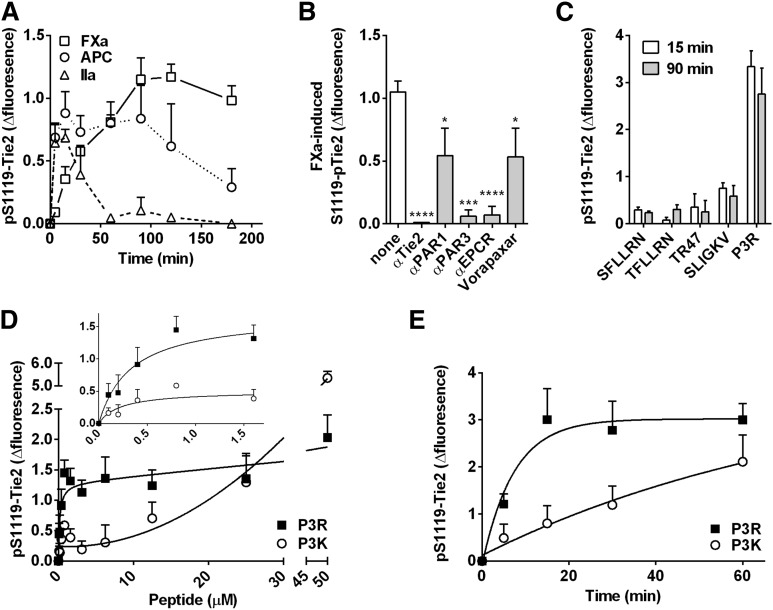Figure 6.
FXa induces PAR3-dependent phosphorylation of Tie2 in endothelial cells. Activation of Tie2 was determined by analysis of Tie2 phosphorylation at Ser1119-Tie2. (A) Time-dependent Tie2 phosphorylation by FXa (50 nM), APC (50 nM), and thrombin (IIa) (2 nM). (B) FXa (50 nM) induced phosphorylation of Tie2 at 90 minutes after pretreatment with antibodies against Tie2 (anti-hTie2; 25 µg/mL), PAR1 (WEDE15/ATAP; 25 µg/mL), PAR3 (Moab19b; 25 µg/mL), EPCR (rcr-252; 25 µg/mL), or an inhibitor against PAR1 (vorapaxar; 1 µM). (C) Induction of Tie2 activation at 15 and 90 minutes by the tethered-ligand peptides of PAR1, PAR2, and PAR3: TRAP (SFLLRN or TFLLRN), TR47 (PAR1 residues 47-66), SLIGKV (PAR2), and P3R (42-65). (D) Concentration-dependent Tie2 phosphorylation by P3R (42-65) and P3K (39-65). Insert shows an expanded x-axis between 0 and 1.5 µM peptide. (E) Time-dependent phosphorylation of Tie2 by P3R (42-65) (50 µM) and P3K (39-65) (50 µM). (A-E) Data points represent the mean ± SEM of at least 3 independent experiments with 3 replicates per experiment. *P < .05; **P < .01; ***P < .001; ****P < .0001.

